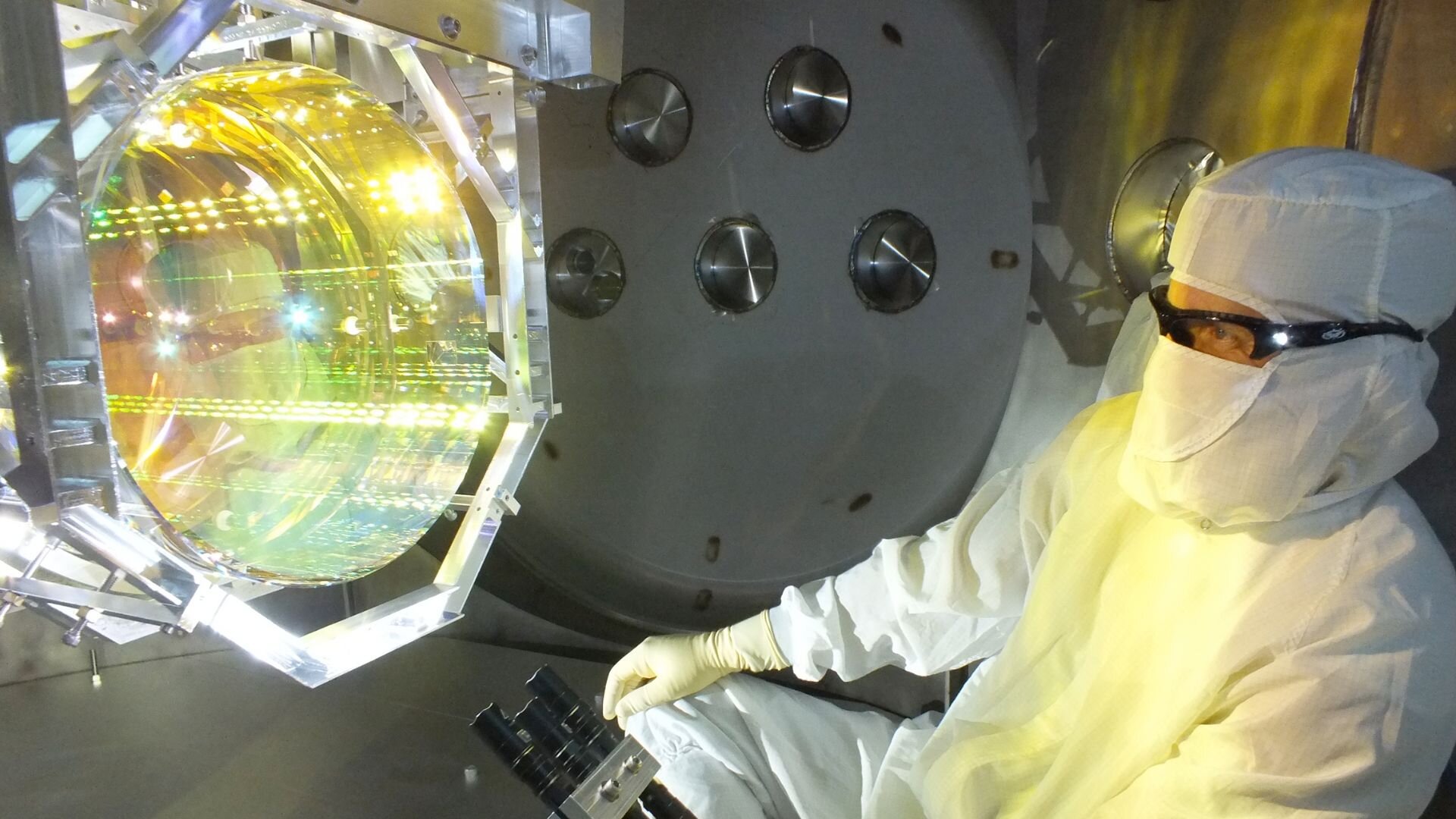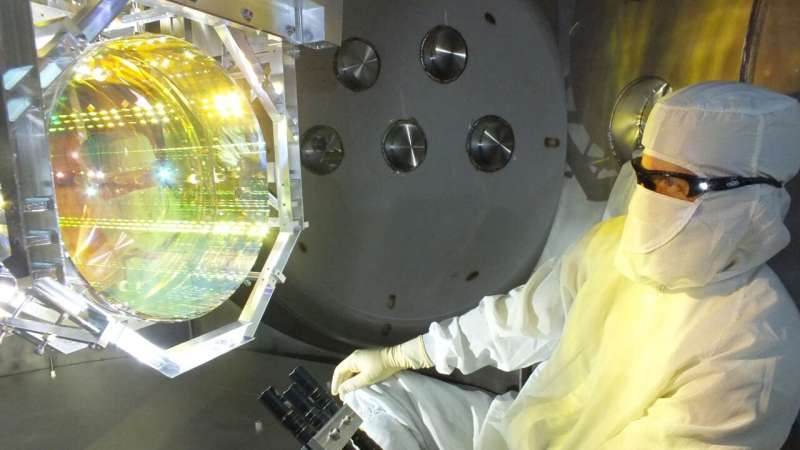

A new study published in Physical Review Letters (PRL) proposes using gravitational wave detectors like LIGO to search for scalar field dark matter.
Dark matter, an elusive form of matter, makes up to 30% of the observable matter in the universe. It doesn’t absorb, emit, or reflect light, making it invisible to us.
Its presence is inferred due to its gravitational effects on visible matter, such as the movement of galaxy clusters and the rotation of galaxies. Due to its elusive nature, it has garnered widespread interest from scientists. But, despite extensive research, its nature remains unknown.
The PRL study, led by Dr. Alexandre Sébastien Göttel from Cardiff University, explores the search for a particular candidate for dark matter called scalar field dark matter. Dr. Göttel spoke to Phys.org about the research.
“I recently changed fields from particle physics, focusing on solar neutrinos, to gravitational wave data analysis. The opportunity to search for dark matter with LIGO seemed like the ideal way to apply my expertise in both areas while learning more about interferometry,” said Dr. Göttel.
Gravitational wave detectors
Gravitational wave detectors are highly sensitive devices that detect tiny distortions (aka gravitational waves) in spacetime.
Laser Interferometer Gravitational-Wave Observatory, or LIGO, uses laser interferometers to detect gravitational waves. The setup consists of two 4-kilometer arms at right angles. A laser beam is split into two and sent along each arm.
Gravitational waves stretch and compress spacetime itself, and since they are transverse in nature, they would cause the distance of one of the arms to stretch, while causing the other to compress. This means that the time taken by light would be different along each arm.
The two beams are then sent back to the center using a mirror and the interference patterns are measured. The changed interference pattern is how LIGO detects the presence of a gravitational wave.
Using LIGO for detecting dark matter
One of the hypothesized forms of dark matter is scalar field dark matter. These are ultralight scalar boson particles, which means they possess no intrinsic spin, or directionality. In simple terms, if they were to be rotated in space, their properties would remain unchanged.
Scalar field dark matter is theorized to interact weakly with matter and light. This weak interaction coupled with its low mass means that scalar field dark matter can exhibit wave-like structures, spreading out and overlapping to form wave patterns.
This allows them to create stable formations, like clouds of dark matter that can move through space without breaking apart. This property of scalar field dark matter is key to using gravitational wave detectors, like LIGO, to search for them.
Dr. Göttel explained, “Some theories suggest dark matter behaves more like a wave than a particle. These waves would cause tiny oscillations in normal matter, which can be detected by gravitational wave detectors.”
Test mass effects
The research team used data from LIGO’s third observation run and extended the search to lower frequencies (10 to 180 Hertz), improving sensitivity over previous work.
While previous studies account for the effect that scalar field dark matter would have on the beam splitter, similar to gravitational waves, the researchers also incorporated the effect on the mirrors in the interferometer arms.
“At an atomic level, you can imagine the dark matter field as fluctuating alongside the electromagnetic field. The dark matter field oscillations effectively modify the fundamental constants, i.e., the fine structure constant and electron mass, which govern electromagnetic interactions,” said Dr. Göttel.
Since dark matter oscillations affect every single atom in the universe, considering their effect on test masses, or mirrors, in the interferometer arms was a crucial consideration made by the research team.
Dr. Göttel further clarified, “All matter would be affected by these oscillations, but the oscillations of other parts of the instrument would have no or very little effect on the passing laser beam, which is what we can detect.”
Setting upper limits
The research team developed a theoretical model to understand how scalar field dark matter would interact with the LIGO components, beam splitters and test masses.
Following this, they used simulation software to understand how scalar field dark matter would affect LIGO’s output, if it were present. The simulation provides an idea of the kind of signal or anomaly they should be looking for in LIGO’s data.
Then the research team used the data from LIGO and applied a method called logarithmic spectral analysis to identify patterns or signals that match the predicted effects of scalar field dark matter.
The team was unable to find convincing evidence for scalar field dark matter in the LIGO data. However, they were able to set new upper limits on the strength of the interaction between dark matter and LIGO components.
This coupling strength is the threshold value above which scalar dark matter’s presence could be detected. The value of this coupling strength was improved by a factor of 10,000 over previous work, in this particular frequency range.
“We are the first to account for additional differential effects in the test masses, which are significant at low frequencies. By combining this with a new analysis method that maximizes the statistical power in the data, we’ve achieved greatly improved results,” concluded Dr. Göttel.
The study presents methods to predict the impact of core optics changes, showing that small adjustments in mirror thickness could yield significant improvements. The research team also estimates that future detectors will be able to outperform even indirect search methods and be capable of ruling out entire categories of scalar dark matter theories.
More information:
Alexandre S. Göttel et al, Searching for Scalar Field Dark Matter with LIGO, Physical Review Letters (2024). DOI: 10.1103/PhysRevLett.133.101001
© 2024 Science X Network
Citation:
Scientists propose a new method to search for dark matter using LIGO (2024, September 20)
retrieved 20 September 2024
from https://phys.org/news/2024-09-scientists-method-dark-ligo.html
This document is subject to copyright. Apart from any fair dealing for the purpose of private study or research, no
part may be reproduced without the written permission. The content is provided for information purposes only.